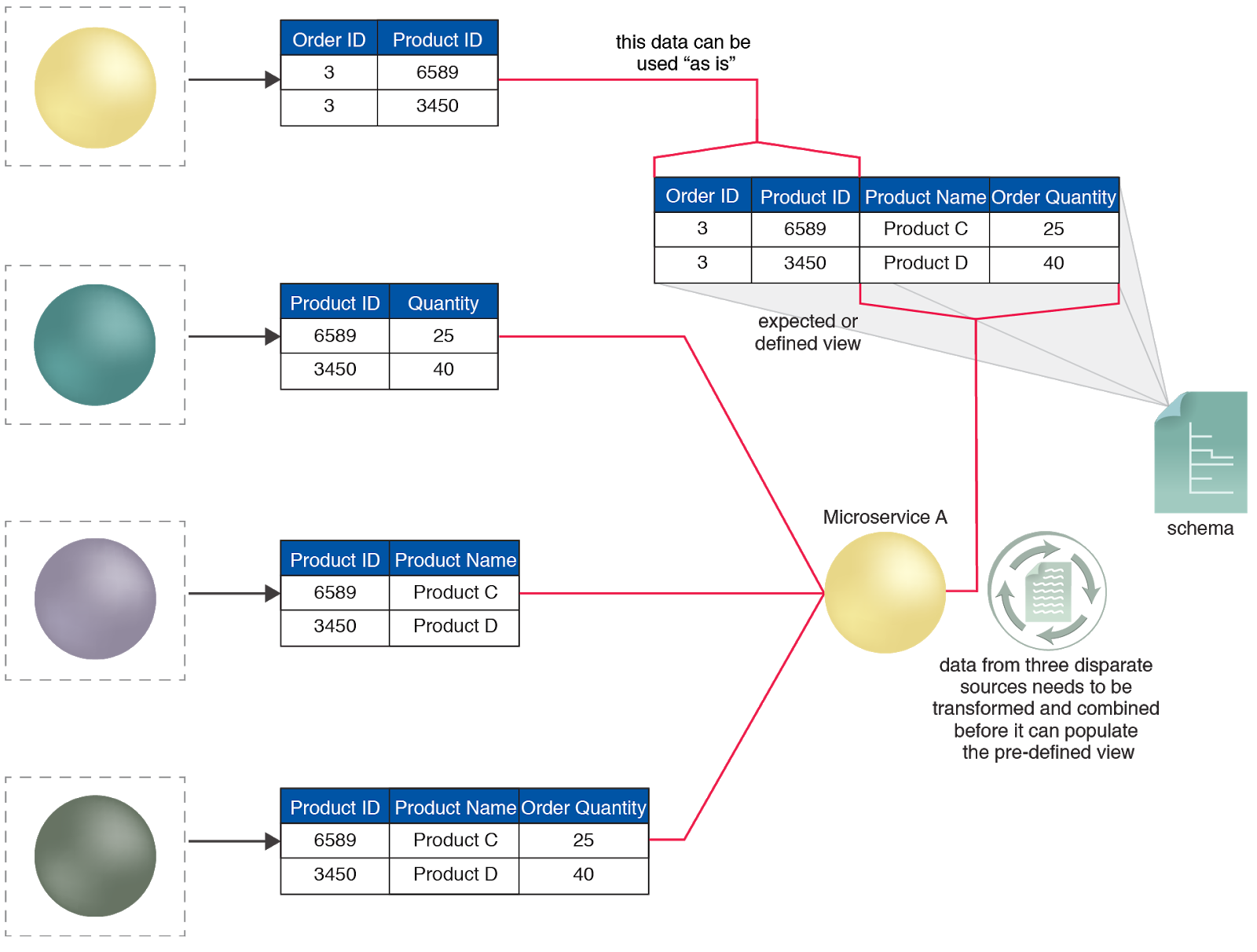Microservice and Containerization Patterns > State & Data Access Patterns > Pre-Defined Data View
Pre-Defined Data View (Erl, Naserpour)
How can data collected at runtime from multiple sources be efficiently presented into a pre-determined report format?

Problem
Solution
Application
A microservice instance registry is implemented. This registry is essentially a database of active and currently running microservice instances, their APIs and locations. When a new microservice is instantiated, that instance is registered in the microservice instance registry.

Microservice B queries the microservice instance registry to determine whether an instance of Microservice A is active and available.
This pattern can be applied by enabling microservice instances to be discovered and by further enabling the self-registration and semi-automated registration of microservice instances, as explained in the complete pattern description.
This pattern is covered in Module 10: Advanced Microservice Architecture & Containerization..
For more information regarding microservice and containerization courses and accreditation,
visit the Microservice Architect Certification program page..
